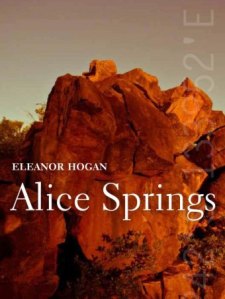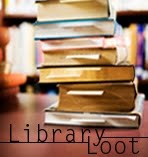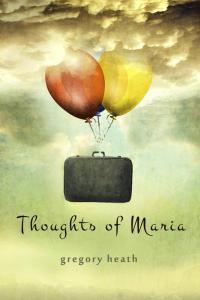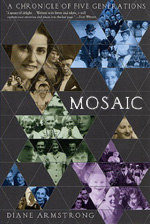 Synopsis: this is a book about life in Alice Springs, and the joys and challenges of living there. It is not a paeon to the glories of the desert and the openness of space in Australia’s red centre. Rather it is more of a social commentary and a reflection on the human challenges that Alice Springs provides in abundance and in-your-face.
Synopsis: this is a book about life in Alice Springs, and the joys and challenges of living there. It is not a paeon to the glories of the desert and the openness of space in Australia’s red centre. Rather it is more of a social commentary and a reflection on the human challenges that Alice Springs provides in abundance and in-your-face.
Hogan states “Alice Springs is a place of extremes –of climate, of distance, of attitudes, of social privilege, of racial and gender divides –that are often highly conflicted.” Her goal is “to throw light on the texture of its everyday life through describing a typical year in the life of the town[i].”
Review
 Hogan is not a “blow-in[ii]” two-year tourist writing about her experiences then heading back to the big smoke. Nor is she a FIFO, fly-in fly-out adviser. She and her friends reflect a dilemma perhaps more typical of Alice than Darwin: will they “serve a two-year, three-year, five-year, eight-year sentence[iii]”? The use of a word more typically referenced in the judicial system perhaps provides an unintentional insight. The fact that they even question how long they’ll stay separates them from long-term residents, but perhaps gives them a comparative insight into life in a different place.
Hogan is not a “blow-in[ii]” two-year tourist writing about her experiences then heading back to the big smoke. Nor is she a FIFO, fly-in fly-out adviser. She and her friends reflect a dilemma perhaps more typical of Alice than Darwin: will they “serve a two-year, three-year, five-year, eight-year sentence[iii]”? The use of a word more typically referenced in the judicial system perhaps provides an unintentional insight. The fact that they even question how long they’ll stay separates them from long-term residents, but perhaps gives them a comparative insight into life in a different place.
She also queries when one becomes a Centralian, or indeed a Territorian. Officialdom apparently requires that you reside in the Centre for 25 years before being invited to attend the Annual Centralian Dinner in “Territory rig” (the local dress code). Popular myth has it that if you see the Todd (River) flow three times you’ll be in Alice for life. Perhaps that only applies if you live there when it flows, for which I’m grateful as I’ve seen it under water twice during work visits.
It’s only in writing about the book that I’ve come to realise a particular omission. Although sights and places are referred to, there’s no description that I recall to bring to life why people love the town and its region: its beauty, starkness and the sheer grandeur of some of its places and flora. The book is not intended as a tourist guide but it does mean that we miss out on some of the wonders of the place.
I was much amused by the familiarity of her description of those who work and travel to the Aboriginal communities (or indeed many places in the Territory) “it was difficult to tell apart a tradie returning from a maintenance job or a lesbian coming home from a social justice mission to an Aboriginal mob out bush[iv]”. Why does she single out lesbians in this way? Because Alice has the country’s highest proportion of lesbian women.
A further omission from the book is the level of animosity and distrust between central Australia and the powers-that-be in Darwin. It’s an undercurrent that is evident in most workplace dealings across the regions. Australians would best understand this in the sense of how Canberra’s bureaucrats and politicians are perceived in the rest of the country.
One story Hogan tells is of her Sydney friends arguing that women over 30 shouldn’t wear shorts. She says that wearing shorts came to mean “a shift to being in another, quite unmetropolitan place”[v]. I confess I found this whole Sydney attitude downright bizarre, but then I’ve lived my whole life in tropical and sub-tropical regions….and I spend my non-working life in shorts.
The book focuses on, and emphasises, the vast social challenges of Alice Springs and the region, of which the Indigenous issues are paramount. One can live in urban Australia and rarely see an Aboriginal person, or one who is noticeable as “other”. Life in the Territory, and in Alice in particular, presents a vastly different experience, one that grey nomads and other urban tourists will likely find confronting and perhaps reinforce their racial stereotyping.
A key focus throughout the book is the vast dichotomy between Indigenous lives and that of their whitefella counterparts, in terms of violence, health and education[vi]. Hogan’s stories will be both shocking and enlightening to those who’ve had little exposure to the level of the problem. She quotes a social worker, Dale Wakefield: “you prepare for the worst in Melbourne, but the worst happens in Central Australia[vii]”. Long-term residents of the Territory and the Centre tend to become inured to the sights and problems they see around them, frequently becoming judgmental and critical. Hogan frequently quotes social justice experts that it will take a generation or more to turn things around. I suspect this is a generous estimate and it may well take another two generations at least, despite the good will and efforts of many people.
Over time Hogan comments “even a simple trip up the street to buy groceries might involve seeing an ugly incident[viii]”. It was the on-going impact of the social dichotomy that seems to have led to Hogan’s departure back to the big smoke, remaining forever changed no doubt by her life experience in Alice.
A further consideration in Hogan’s decision to leave was the turnover of people with the loss of friendships: by calling them expats she essentially marks them out as different from the long-term residents. The caution of old-timers in accepting short-term incomers is one of the hallmarks of the Territory and a mark of the regular flow in and out of expats: it takes time to earn your local stripes. On arriving in the Territory 16 years ago we found this strange and unexpected. We had been accustomed to the expat situation in Papua New Guinea, where even though there was a regular turnover in any given town, you expected to maintain the friendship over time and place by visits during leave or by further postings.
I thought this was a great book which provided excellent insights into the daily challenges of life in Alice Springs. Hogan has teased out many of the issues, especially those of social justice, which confront residents daily and is both sympathetic and empathetic. I recommend this book to those who want to learn more about the day-to-day complexities of Indigenous issues.
Quoting Dale Wakefield again “in Alice you walk down the street and see beaten women….You see kids wandering around by themselves and you know there’s nowhere for them to go. It’s very, very confronting[ix]”.
How pertinent, then, to read this weekend’s in-depth commentary by journalist Paul Toohey in the NT News.
[vi] She includes some statistics starting at page 174 but stories are revealed throughout the book.










